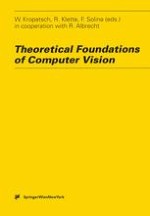Computer Vision is a rapidly growing field of research investigating computational and algorithmic issues associated with image acquisition, processing, and understanding. It serves tasks like manipulation, recognition, mobility, and communication in diverse application areas such as manufacturing, robotics, medicine, security and virtual reality. This volume contains a selection of papers devoted to theoretical foundations of computer vision covering a broad range of fields, e.g. motion analysis, discrete geometry, computational aspects of vision processes, models, morphology, invariance, image compression, 3D reconstruction of shape. Several issues have been identified to be of essential interest to the community: non-linear operators; the transition between continuous to discrete representations; a new calculus of non-orthogonal partially dependent systems.
